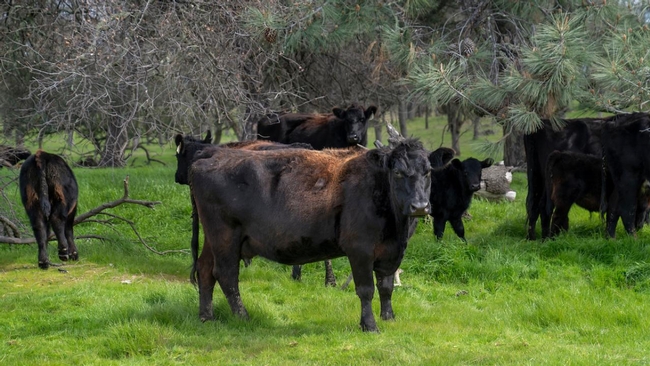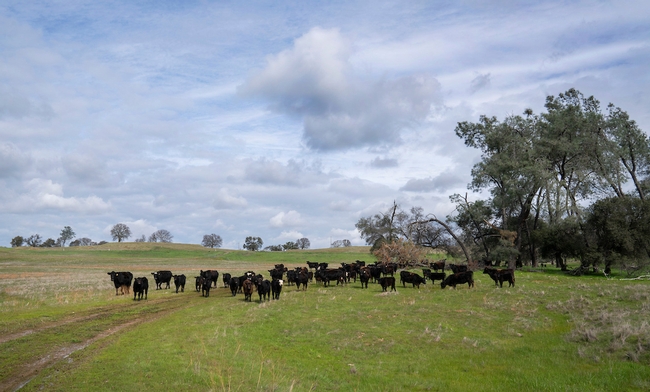
Posts Tagged: Meat
UC Davis ENT Seminars: From Bark Beetles to Meat-Eating Bees
From bark beetles to meat-eating bees! And from UC Davis to France... Seminar coordinator Emily Meineke, urban landscape entomologist and assistant professor, UC Davis Department of Entomology and Nematology, has announced the list of the department's 10 winter seminars, which begin Jan. 11...
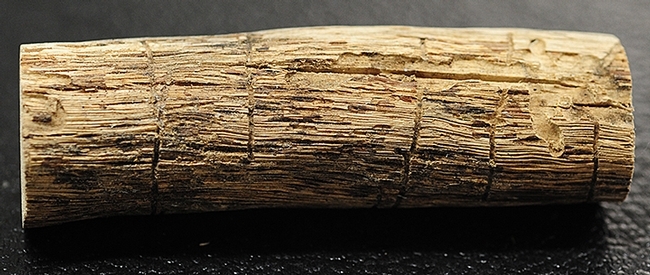
This is a gallery of bark beetles. A seminar on forest beetles will be among the seminars hosted by the UC Davis Department of Entomology and Nematology. (Photo by Kathy Keatley Garvey)
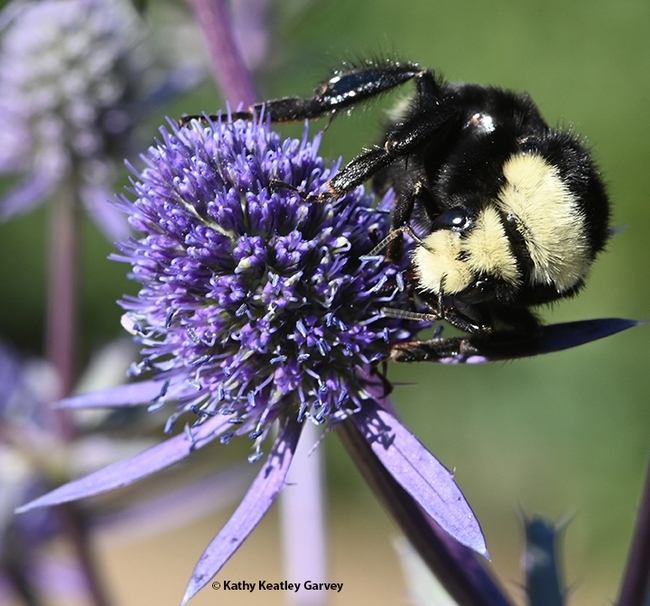
Wild bees will be among the UC Davis Department of Entomology and Nematology's seminar topics. This is a yellow-faced bumble bee, Bombus vosnesenskii, sipping nectar from amethyst sea holly, Eryngium amethstinum, in Sonoma. (Photo by Kathy Keatley Garvey)
USDA Offers Resources to Expand Meat Processing
USDA Offers Resources to Expand Meat Processing
The U.S. Department of Agriculture announced late last week the launch of the Meat and Poultry Processing Capacity Technical Assistance Program to provide technical assistance to meat and poultry grant applicants and grant-funded projects.
Processors and applicants involved with the Meat and Poultry Inspection Readiness Grant program and the Meat and Poultry Processing Expansion Program can access this technical assistance. USDA also announced it is now accepting applications for $23.6 million in competitive grant funding available through the MPIRG program.
Click Herefor more information.
Source: USDA
New Lamb Check-off Rules for Auction Markets
The following information came from the American Lamb Board.
|
Changes in Mandatory Lamb Checkoff Collections at Auction Markets Announced While the American Lamb Checkoff rate is not changing, how the mandatory assessments are collected for animals sold through “market agencies” is changing. The change applies to animals sold through auctions, including sale barns, video/online sales, and sales at shows and fairs. These auctions will now collect both live weight assessments and per head (first handler) assessments as of January 21, 2022. However, the delayed enforcement date for submitting these assessments is March 22, 2022. This allows time for auctions to adjust their systems without a penalty for late payments. If a producer or feeder sells animals to a first handler and has already paid the checkoff at an auction, a refund will be issued. To receive a refund, documentation will be required from the time of sale. The national lamb checkoff, directed by the American Lamb Board (ALB), is funded by mandatory assessments (checkoff) paid by all segments of the sheep industry. By federal law, all sheep or lambs of any age, including ewes, rams, feeder and market lambs, breeding stock and cull animals, are subject to the national lamb checkoff assessment at the time of every sale. The mandatory American Lamb Checkoff assessment rates do not change. The live weight assessment is .007 cents per pound and the first handler assessment is 42 cents per head. “It's important to remember that the sheep industry passed the mandatory American Lamb Checkoff so it would be equitable and beneficial for both those owning the lambs prior to slaughter and those who harvest the meat. That's why there are both live weight and per head assessments. And, these collections are only from U.S. born animals, allowing funds to specifically promote American Lamb. This does not change,” said ALB Chairman Peter Camino, Buffalo, WY. The changes had to go through a vigorous USDA process. The federal register announcement is here. To fully understand the value of these changes, a refresher about this particular checkoff helps. When the mandatory American Lamb Checkoff was enacted in 2002, most lambs were marketed through traditional channels. The lamb industry has evolved considerably in the past 20 years, particularly the growth of non-traditional markets. For example, direct sales to consumers, ethnic and farmers markets, and butcher shops now participate to a larger degree in the purchasing and processing of lamb and lamb products. The 2002 Lamb Promotion, Research and Information Order mandates that live weight assessments be collected from producers or feeders and be forwarded to the next purchaser, if applicable. At the end of the process, the first handler (usually the processor) or exporter is responsible for submitting all live weight and per head assessments to the ALB. This is known as a pass-through method, with the bulk of collections made at the end of the process. ALB listened to industry input, and it became clear that changes to the collection process were necessary. To maintain a fair and efficient mandatory American Lamb Checkoff for the entire industry and to reduce the burden on those collecting it, assessments need to be collected at the time of sale instead of the original pass-through method. More information on how the mandatory American Lamb Checkoff works and how to pay or request refunds, is at LambResourceCenter.com. The USDA Agricultural Marketing Service website on the lamb program is also a good resource. The American Lamb Board was put into place by the 2002 lamb promotion order. ALB is an industry-funded national research, promotion and information checkoff program that works on behalf of all American producers, feeders, seedstock producers, direct marketers and processors to build awareness and demand for American Lamb. ALB conducts promotion and research programs with the goal of creating greater demand and profitability for the entire industry. ALB does not promote imported lamb. It does not promote wool. ALB is not funded by dues and is forbidden by law to influence legislation. It exists to promote lamb to consumers and provide information to help producers raise lamb more efficiently and effectively. |
California’s local meat suppliers struggle to stay in business
UC Davis report suggests ways to build resilience
The University of California, Davis, Food Systems Lab has released a white paper showing the need to support California's small and mid-scale meat suppliers and processors in order to build a more resilient meat supply chain. It describes how the meat supply chain and rural economies could benefit from regulatory changes and more collaboration among producers and other stakeholders in the system.
The pandemic shut down meat processing plants in 2020, as did recent ransomware attacks on JBS, the nation's largest meat supplier. Report authors said this highlights the need to support small- and mid-scale suppliers.
“COVID and the ransomware attacks put a spotlight on how the concentration of the meat supply chain increased vulnerability in the food system,” said report co-author Tom Tomich, founder of the UC Davis Food Systems Lab and distinguished professor in the Department of Environmental Science and Policy. “We need to level the playing field so small- and mid-scale farms have an easier way to bring their product to market.”
The report says the lack of access to slaughter facilities, limited capacity of cut and wrap facilities, and concentration of marketing channels create conditions in which small- and mid-scale farms and ranches struggle to stay in business.
“These challenges are exacerbated by policies that tilt the playing field against small operators. Fortunately, new state and national legislation and programs are developing that could increase resilience in our food systems,” says Michael R. Dimock, Roots of Change program director and lead author for the report. “We need cities and counties to help fix the problems because local land use policies often impede development of resilient supply chains.”
Lack of access and limited capacity
Smaller ranchers in California have limited access to slaughter and processing facilities. In the last 50 years, California has lost half of its federally inspected meat processing plants, and the remaining facilities are unable to meet demand. Many of the 46 USDA-certified slaughter plants operating in California are closed to smaller producers.
“This means that smaller ranchers must drive hundreds of miles to reach a facility or have to wait months due to limited capacity,” said Tomich.
The report said a combination of federal, state and private investments could provide a broader geographic distribution of plants of differing scales. It also suggests expanding mobile, on-farm slaughter operations for sheep, goats and hogs, similar to those for beef.
Regulatory barriers and opportunities
Complex inspection requirements and other regulatory barriers make it difficult for small- and mid-scale producers to compete with big suppliers. The report suggests California create its own meat inspection program equivalent to the federal program to serve smaller ranchers. Prioritizing public procurement of local, high-value meat would also help expand market access for smaller producers.
Broader benefits of smaller operators
The report notes other beneficial roles of small- and mid-scale livestock operations, apart from the potential to increase resilience in our food system. Livestock grazing is a cheap and effective way to reduce wildfire risk. Supporting local meat processing also helps rural economies and creates community-based jobs.
The report was based on 27 interviews with people representing a wide spectrum of activities and points of view within the meat supply chain throughout the state. Authors are Courtney Riggle, Allan Hollander, Patrick Huber and Thomas Tomich of the UC Davis Food Systems Lab, and Michael R. Dimock with Roots of Change.
Funding for the study came from the TomKat Foundation and USDA Hatch Program.
Survey for Livestock Guard Dog Owners
UCCE Looking to Document LGD Bonding Techniques 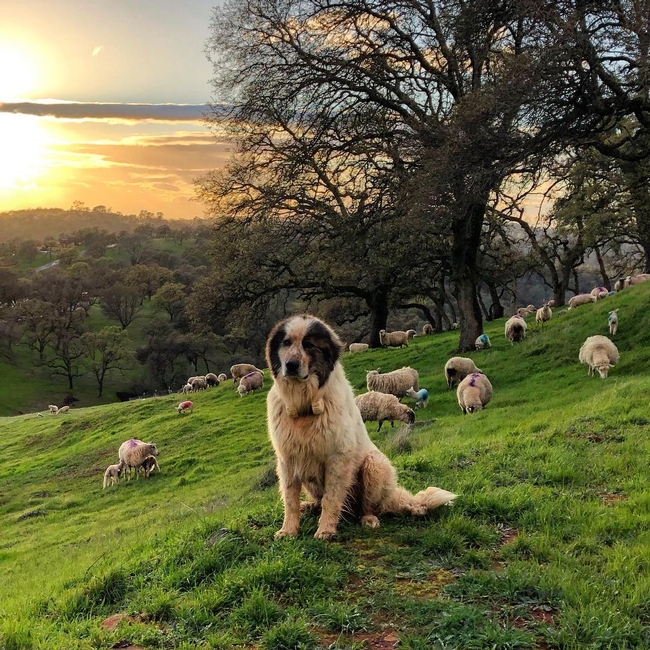
The process of bonding livestock guardian dogs with livestock is crucial to their success as adult dogs. However, little if any research-based information is available on bonding techniques.
University of California Cooperative Extension Human-Wildlife Interactions Advisor Carolyn Whitesell and UCCE Livestock and Natural Resources Advisor Dan Macon have developed a producer survey designed to document the types of bonding processes used by commercial livestock producers. The researchers hope to build greater understanding regarding the approaches that result in successful bonding – and those that do not.
Project cooperators will complete a short online or telephone survey when they start the bonding process with a new pup. Follow-up surveys will be conducted monthly until the bonding process is completed. Surveys should take 10 to 15 minutes to complete. All responses will remain confidential.
If you're starting a livestock guardian dog puppy in the next year and would be willing to participate in this project, contact Macon at dmacon@ucanr.edu or 530-889-7385.
Click Here for more information.

